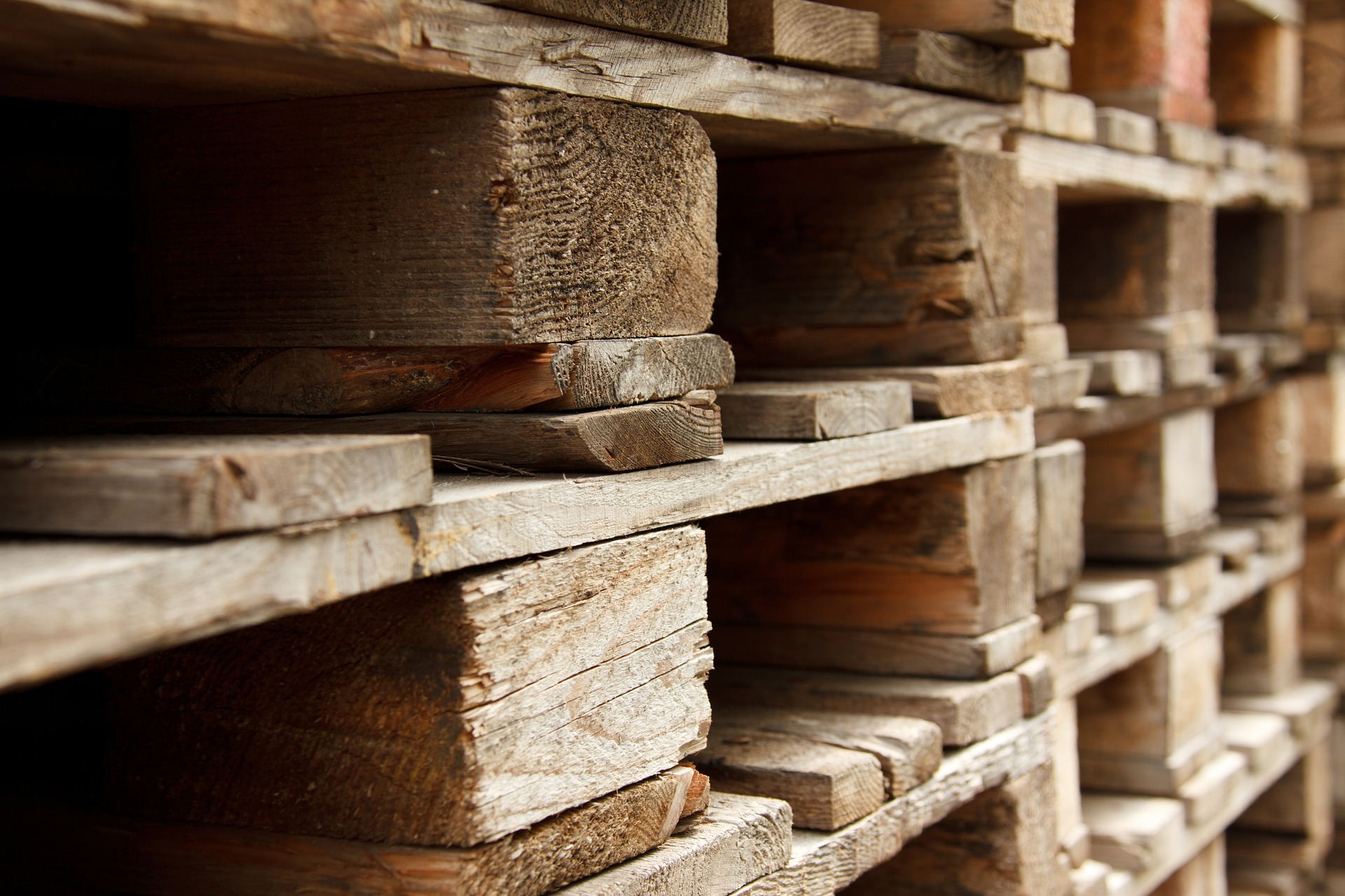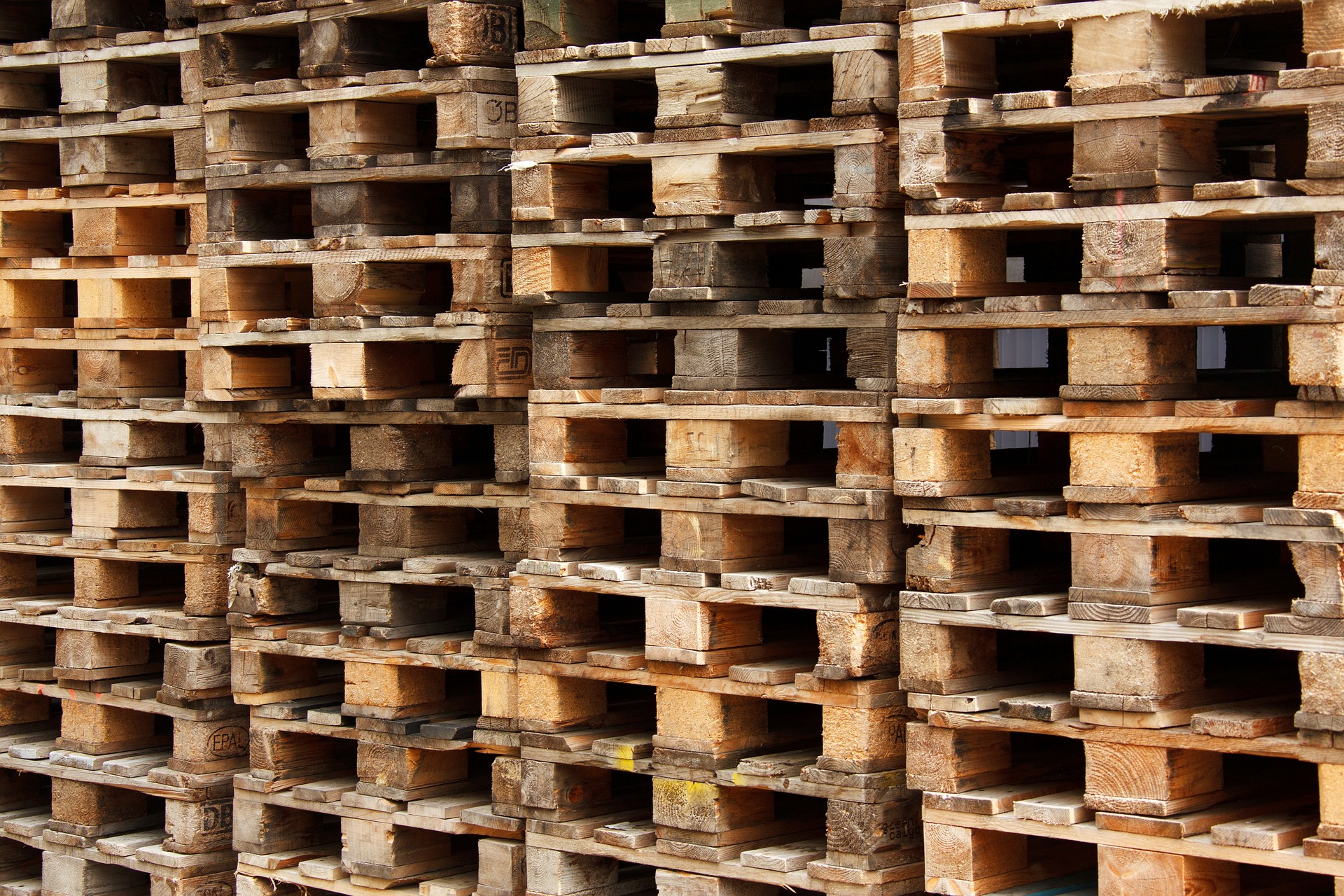Choosing the right pallet can feel like a small decision, but it has a big impact on daily operations. From storage to transport, knowing the different types will help you avoid mistakes and keep things running smoothly.
Introduction
Need to purchase pallets for your new business? Not sure which type to choose? This is a common occurrence for many business owners, and it can be confusing to decide which ones would best suit your needs. For those who are new to pallet types, the following is a guide to which pallet types may be best suited for your transport and business needs.
What are Pallets?
Pallets are flat transport structures made from various materials that support goods in a stable way while being lifted by forklifts, pallet jacks, or other equipment. They’re an essential part of modern logistics, making it easier to store, handle, and move products of different weights and sizes across warehouses and shipping networks.
Benefits of Using the Right Pallet Type
- Increased Efficiency: The right pallet makes loading, stacking, and moving products faster. Less time spent handling shipments means quicker turnaround and smoother operations for warehouses and distribution centers.
- Improved Safety: Using the proper pallets reduces the risks of accidents from collapsing under excessive loads or broken deck boards. Durable, well-matched pallets also protect workers, equipment, and the products being shipped or stored.
- Cost Saving: Matching pallets to the application avoids frequent replacement and product damage. Fewer repairs and less waste add up to noticeable savings over time for most businesses.
- Environmental Sustainability: Reusable pallets, whether wood, plastic, or metal, help cut waste. Choosing recyclable or long-lasting pallet types also supports greener practices without disrupting day-to-day specific industry needs.
Common Types of Pallets
Metal Pallets
Metal pallets are known for their incredible strength and resistance to harsh conditions. They handle heavy loads, clean easily, and are very durable so they can last for years, making them a favorite in industries where hygiene and durability matter. While heavier and pricier than other options, they deliver long-term reliability.
Advantages of Metal Pallets
- Extremely durable.
- Ideal for chemical and food industries because they’re easily cleaned.
- Recyclable, time and time again.
- Don’t cause splinters like wooden pallets do.
- Mostly free of pests and bugs.
- Stronger than plastic and wooden pallets.
- Don’t decay, and they are highly weather-resistant.
Disadvantages of Metal Pallets
- May cost more in transportation.
- Heavier compared to other pallets.
Plastic Pallets
Plastic pallets are lightweight, consistent in size, and resistant to water or bacteria. They’re often used mostly in the food and pharmaceutical industries because they’re easy to sanitize. However, you’ll find them in many industries. Though not as strong as metal, their reusability and lower weight make them popular for many shipping applications.
Advantages of Plastic Pallets
They resist water, chemicals, and pests while maintaining their consistent size and shape. Easy to clean and reusable, plastic pallets are a dependable choice for industries that require strict hygiene standards.
Disadvantages of Plastic Pallets
They cost more than wood, and they can break under extremely heavy loads. Once damaged, repairs are harder compared to wooden pallets, which can simply be patched with new boards.
Lightweight Plywood Pallets
Plywood pallets are designed for holding light- to medium-weight products. They offer a durable and strong packaging solution for many industries.
Advantages of Plywood Pallets
- Ideal for layer stacking and rack stocking.
- Plywood features a clean smooth surface area.
- Have minimal absorption of moisture.
- Perfect for transportation and shipping due to their lightweight, strong design.
Disadvantages of Plywood Pallets
- Tends to be more difficult to store in racking systems.
- If left outside, can suffer water damage.
- Moving between warehouses can be limited as many warehouses don’t store these pallet types.
Wooden Pallets
Wood pallets remain the most common choice because they’re affordable and widely available. They’re adaptable to different industries, easy to repair, and can be recycled, giving them a second life beyond their first use.
Available in various designs, wooden pallets are ideal for holding heavier products that require a one-way flow in your warehouse.
Advantages of Wooden Pallets
- Durable and strong in design.
- Ideal for rack storing.
- Reliable load carriers.
- Tend to be less expensive than metal-based pallet materials.
- Feature high friction compared to metal and plastic pallets.
- Easy to construct in a short amount of time.
- Can be recycled with paper and mulch.
- Can be easily fixed with recycled materials.
- Easily resold.
- Easy to repair, as broken boards can be replaced.
Disadvantages of Wooden Pallets
- Tend to be more susceptible to protruding nails, splinters, shrinking, and warping, which can lead to continual reordering.
- If they become wet, they can be very difficult to clean. The wetness can also cause fungi and bacteria to grow.
- More costly for air freight due to their heavy-weight design
Presswood Pallets
Presswood pallets are lightweight yet surprisingly strong, making them suitable for export. Their nestable design saves space, and being made from recycled wood fibers, they offer a sustainable option that still performs reliably in shipping. Presswood pallets are constructed with high pressure and high temperature, creating a solid piece from fibers of dried wood.
Advantages of Presswood Pallets
- Easy to handle.
- Low moisture content.
- Can be effectively stacked on top of each other.
- Easily recyclable.
- Provide great strength, though lightweight.
Disadvantages of Presswood Pallets
- Rack storing can be difficult.
- If left outside they can succumb to water damage.
- Many warehouses store these pallets, so movement between warehouses tends to be limited.
Factors to Consider While Choosing the Right Pallet
Choosing a pallet goes beyond grabbing what’s cheapest. Each material and style brings its own strengths and drawbacks, so it’s essential to match your choice to how the pallets will actually be used.
Load Capacity
Consider the weight of your products. Heavy loads demand strong pallets, such as metal or hardwood, while lighter goods can often be safely moved with softwood pallets such as plywood or presswood.
Pallet Material
Wood, plastic, metal, and plywood each perform differently. Match the material to your handling environment, whether it’s heavy industry, food-grade settings, or international trade or export requirements.
Pallet Style
Some pallets are nestable, others rackable. Think about how you’ll store, use, and move them. Matching style to your warehouse setup avoids wasted space and handling problems.
Durability
If your pallets will be reused, choose a material that holds up to repeated trips. Metal and plastic outlast wood, though they cost more upfront.
Frequency of Use
For one-way shipments, single-use or disposable pallets are often chosen. They’re standard in size but usually made with thinner wood, so they aren’t strong enough for racking systems or repeated trips. They work fine for short journeys but aren’t built for long-term stress.
Most pallets are of sturdier pallet construction, like wooden, plastic, or metal pallets make more sense for long-term use since they can handle repeated handling and storage without falling apart. If your needs are seasonal, renting or buying used pallets is another way to reduce costs without tying up too much capital year-round.
Handling
Forklifts, pallet jacks, and automated systems all interact differently with pallet designs. Be sure your choice fits your handling equipment.
Shipping and Storage Conditions
Humidity, temperature, and weather exposure can damage some pallets. Factor in where they’ll sit and how they’ll travel.
Cost
Balancing upfront cost with lifespan prevents overspending. Sometimes paying more upfront saves money long-term. Used pallets are also worth considering — they can cut costs significantly while still offering dependable performance if they’re in good condition and matched to the right application.
Frequently Asked Questions
Are Plastic Pallets as Strong as Hardwood Pallets?
Plastic pallets are sturdy and reliable, but they’re not usually as strong as hardwood pallets when handling very heavy loads. They shine in industries where cleanliness, consistency, and easy sanitation matter. For lighter to medium goods, they perform well and last longer than wood in damp environments.
How Long Do Wooden Pallets Last?
The lifespan of a wooden pallet really depends on how it’s used. A pallet in light circulation may last for years with occasional repairs, while one in constant rotation may only survive a handful of trips before needing replacement. Regular inspection makes a big difference.
Can I Use Plastic Pallets for Heavy-Duty Industrial Applications?
There are plastic pallets built for heavy-duty use, and they can handle tough jobs, but they often cost more upfront. For large-scale industrial loads, many businesses still choose wood or metal since both provide extra strength and tend to be more cost-effective long term.
Which Type of Pallet is Best for International Shipping?
Presswood and plastic pallets are often the go-to choice for international shipping. They’re lightweight, nest together to save space, and don’t require heat treatment or fumigation like wooden pallets do. That makes them easier to move across borders while keeping shipments compliant and efficient.
Conclusion
Choosing the right pallet for your business will absolutely save you time and money, as well as avoid headaches down the road. Whether you need wood, plastic, metal, or presswood, each has a role to play. Ready to buy? Explore our pallet options today and find the fit that matches your business needs.

